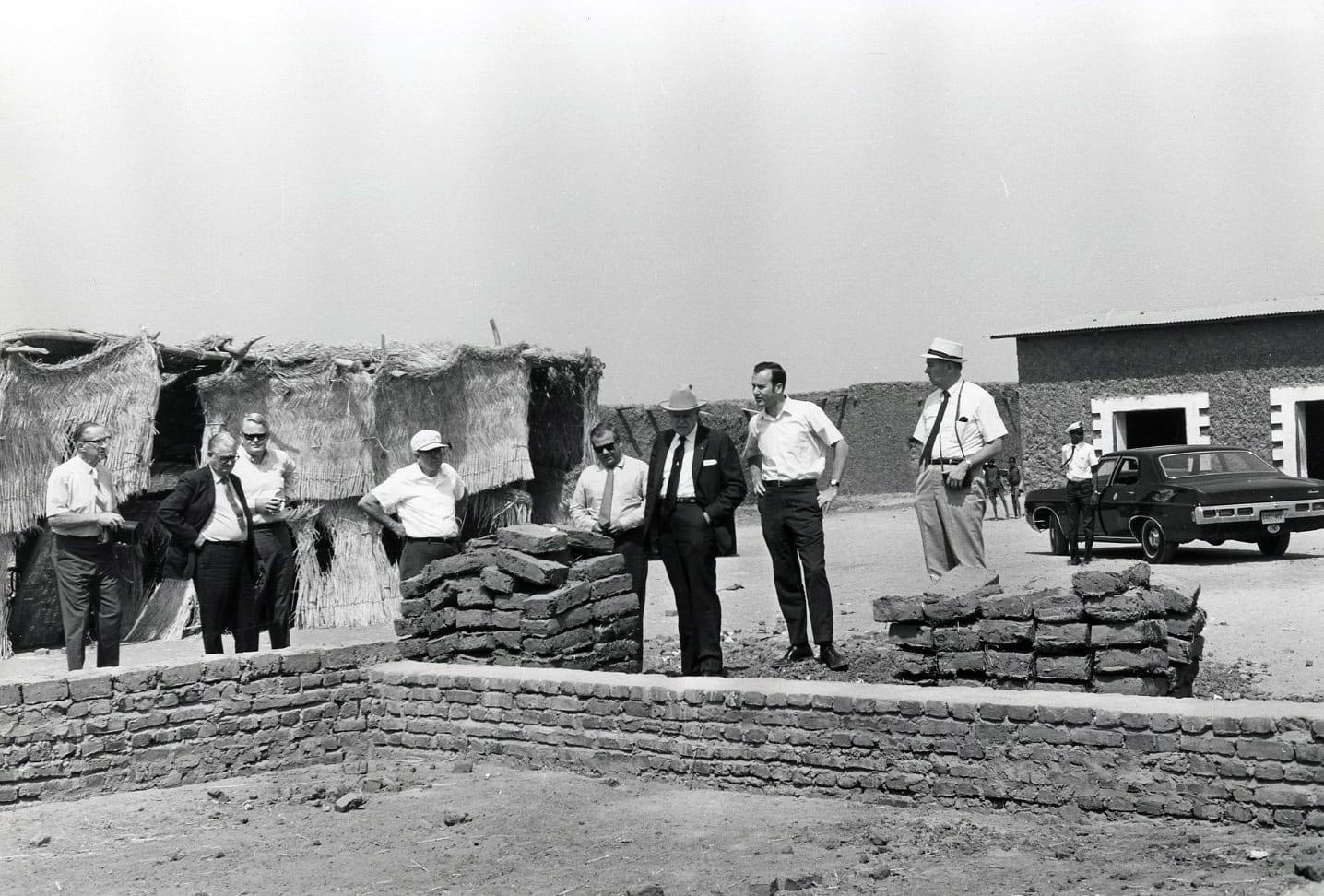
During his time in the United States House of Representatives, W. R. Poage visited all seven continents. This exhibit, while not an exhaustive accounting of Congressman Poage’s international voyages, gives a broad overview of his travel during his 42 years in office. During this time, Poage’s work on the Agriculture Committee and with the InterParliamentary Union (among others) took him overseas where he met, befriended, and learned from hundreds of foreign peoples.
He remembered these experiences fondly, and in his memoirs wrote: “I have always felt that travel was absolutely essential to any well-rounded citizen, and I consider it to be of vital importance to a Member of Congress.” Similarly, Poage believed that congressmen who were too concerned about being on public business missed out on the opportunities for the personal and professional growth that international travel provided.
ASIA
Poage recalled visiting Tokyo, Japan, when the city was still in ruins. In his words, two of the great errors Americans made regarding Japan after World War II were only apparent in hindsight. The first of these was disallowing the Japanese from re-arming. While Poage agreed with the decision at the time, in later years he lamented the undue strain this placed on American forces stationed in Asia. The second, more tongue-in-cheek criticism was the military’s failure to institute the American custom of driving on the right side of the road.
Congressman Poage also noted a difference in the Chinese and American approaches to agriculture; while American farmers measured efficiency in terms of yield per man-hour, their Chinese counterparts measured it in yield per acre regardless of the human labor cost.
Poage visited Tashkent, Uzbekistan (U.S.S.R. until 1991) in 1959, which he spoke of as the center of Russian cotton-growing country. He recalled the Russians picking their cotton by hand and taking great pains to keep their product dry for future storage. At the time, the United States was using strippers and picker machines. The Russians placed their picked cotton along the roadside for up to two weeks, sometimes completely closing the road, to dry it in the sun.
In India, Congressman Poage noted that the Indians were eager to work but had few resources. The smaller villages worked water buffaloes in place of mules and the people considered cattle sacred. This practice, he believed, hindered the Indians’ agricultural growth. He noted that the majority of their infrastructure at the time had been built by the British, including roads and railways.
Congressman Poage visits a Korean warehouse. Click here to view this image in our digital collections.
Mrs. Poage wore this nametage at the 1960 Inter-Parliamentary Conference in Tokyo, Japan. Click here to view this image in our digital collections.
Congressman Poage visits the Taoyuan Primary school in Taipei. Click here to view this image in our digital collection.
EUROPE
Poage first visited Europe in 1944, just months after the Allied landing in France. He was, at the time, a guest of the British government, who wanted the American Congress to better understand the realities of the war. Poage recalled being impressed by the British citizens’ reserve during the war; the country seemed to be carrying on with daily life despite the fighting. At night, however, the streets and windows were dark to defend against German air raids. Bombings were so ubiquitous that British repair crews could be seen each morning rebuilding those structures that were hit the previous night.
The same could not be said of Germany after the war’s end. When Congressman Poage visited the country in 1946, he was struck by the lack of progress the country had made toward rebuilding itself. This visit influenced the implementation of the Marshall Plan, wherein the United States helped restore Germany’s economy. Poage believed that the plan prevented the inevitable fighting and looting that would have torn Germany apart.
In 1959, Poage traveled through Russia on an InterParliamentary Union trip. He described the experience of visiting Rostov-on-Don in terms of its similarity to central Texas’s blackland prairies. The farms he visited were either owned by the state or through a cooperative. While the state-owned farms utilized better machinery, he felt the cooperative farms were generally more successful. He remembered the Russians as being friendly and optimistic about their economic futures. Across the Soviet Union, Poage encountered pictures of Lenin on nearly every available wall. He recognized that most Americans would bristle under the Soviet form of government, but that at the time the Russians felt they were better off under Soviet rule than they had been under the Czars. However, he predicted that the next generation, removed from memories of the old empire, would be more open to criticizing the Soviet government and be instrumental in ensuring world peace.
Congressman Poage observes his own reflection in a mirror during a tour of an Austrian palace, 1969. Click here to view this image in our digital collections.
Congressman Poage poses with casks of wine in Spain, June 1976. Click here to view this image in our digital collections.
OCEANIA
Poage enjoyed his time in Australia, chiefly due to his observation that the Australian people were much like Americans but spoke “British.” Though they visited the great cities of Melbourne and Sydney, his group spent most of their time in the outback. Tasmania reminded him of the English Midlands, both in terms of its people and its geography. Much of the Northern Territory was desert with poor quality cattle, sometimes with only one animal per 160 acres. According to Poage, Queensland, in the northeast, was the “land of opportunity” for Australian settlers. Restrictive title laws, however, hobbled the region’s development. In nearby New Zealand, Poage found “the prettiest grasslands of the world” where he said grass grew year-round.
SOUTH AMERICA
Poage noted that Peru, Ecuador, and Colombia’s agriculture produced “magnificent” sugar and coffee as a complement to American agriculture. All three countries, he believed, should be good markets for domestic grain. The natives of Peru cultivated potatoes in the tradition of their ancestors, though exorbitant land prices strangled individual growth. Fruits were plentiful in Chile, but Poage was especially interested in Argentina, whose own beef and wheat industries were directly competitive with American agriculture. Argentinian beeves were prevented from being imported into the United States because of their proclivity to carry hoof and mouth disease — an affliction that could infect and kill many of their northern cousins. Congressman Poage likened the possible destruction to the plight of the native South American, many of whom were eradicated due to contact with European diseases.
In Paraguay, Poage was initially struck by the lack of contemporary structural components — many buildings still had dirt floors — but found that the country quickly modernized on his return trips. Paraguay’s rapid economic development helped convince Poage that “some countries are far better off with the economic stability of a benevolent dictator than under the turmoil of the constant change of a more democratic government.”
Congressman Poage poses with two llamas outside the airport in La Paz, Bolivia, 1960. Click here to view this image in our digital collections.
Congressman Poage observes earth-moving equipment in Guyana, November 26, 1972. Click here to view this image in our digital collections.
Congressman Poage (in hat) and a group of onlookers observe a bull in Venezuela, 1960. Click here to view this image in our digital collections.
MIDDLE EAST
In Palestine, now Israel, Poage observed irrigation techniques that he had never seen before. As he writes in his travel diary, “I have never seen such terracing, not even in China. Every hillside, no matter how rocky, was terraced, but there is little productive land even on the terraces.” His tour took him through Jerusalem, which he described as “surprisingly modern,” Bethlehem, Jericho, and the course of the Biblical Wise Men. Of the field where Ruth supposedly plowed the wheat, he writes, “Very rocky. I don’t see how wheat grew there.”
Poage, in 1972, observed that Khartoum — the capital of Sudan — was mostly mud huts with a few impressive buildings. The two branches of the Nile came together there, dividing it into three cities. He wrote that the bed of the river was planted with beans and peas as quickly as the water receded. In Bahrain, Poage was received by the Sheikh, who spoke with them in his audience room. Poage writes that the man was a “very human sort of fellow” who assured them of his populist leanings despite being an absolute monarch. He was also very impressed with the alfalfa production of Oman and described Qatar as “a complete desert.”
Congressman Poage shakes hands with an unidentified man in Beirut. Click here to view this image in our digital collections.
Congressman Poage with a group of visitors at a site in Iran. Click here to view this image in our digital collections.
Congressman Poage and a group of people in front of Persian ruins in Iran. Click here to view this image in our digital collections.
Congressman Poage meets with dignitaries in Yemen. Click here to view this image in our digital collections.
AFRICA
In 1947, Poage attended his first InterParliamentary Union Conference in Cairo, Egypt. While there, he realized the value in meeting and getting to know the leaders from other countries. He saw the pyramids at Giza and the Sphinx by the light of a full moon and was very impressed by them. He visited the Royal Palace, which was “much larger than the White House,” though he was unable to meet the King. On the Nile were small cotton fields, often less than a single acre in size, planted by hand in close rows. Poage also saw stands of alfalfa-like Egyptian clover, wheat, and other vegetables. The gardens of the Nile River were especially beautiful.
Poage observed peanuts to be crucial to Western Africa’s economy. The hulls were used for fertilizer and most were grown inland as the land near the coast was poor. Coconuts, bananas, coffee, cocoa, and papayas were also grown on small farms. He found the people of the area to be friendly and interesting, and spoke at length to them about their agricultural practices. Cattle were not raised near the coasts due to the prevalence of the Tsetse fly, which carried “sleeping sickness” and was not found in the higher, dryer interior.
While in Southern Africa, Poage recalled the majesty of the landscape: “We flew over big game country, but could see no animals. we could see the typical African water lakes with game trails going out in all directions … We could see the falls from a distance. At least, we could see the mist. At this time of the year, the flow of the river is low. Above the falls, the river is very wide and with a slight gradient. In fact, it looks much like the Llano, only is many times larger.”
Congressman Poage shaking hands with citizen in Liberia, 1970. Click here to view this image in our digital collections.
Congressman Poage observes two cheetahs in Liberia, 1970. Click here to view this image in our digital collections.
Congressman Poage is part of a group visitng the Sphinx. Click here to view this image in our digital collections.
Congressman Poage and a group of men examine a construction site in Liberia, 1970. Click here to view this image in our digital collections.
(All items featured in this article are from the “W.R. ‘Bob’ Poage Collection” located in the Poage Legislative Library)
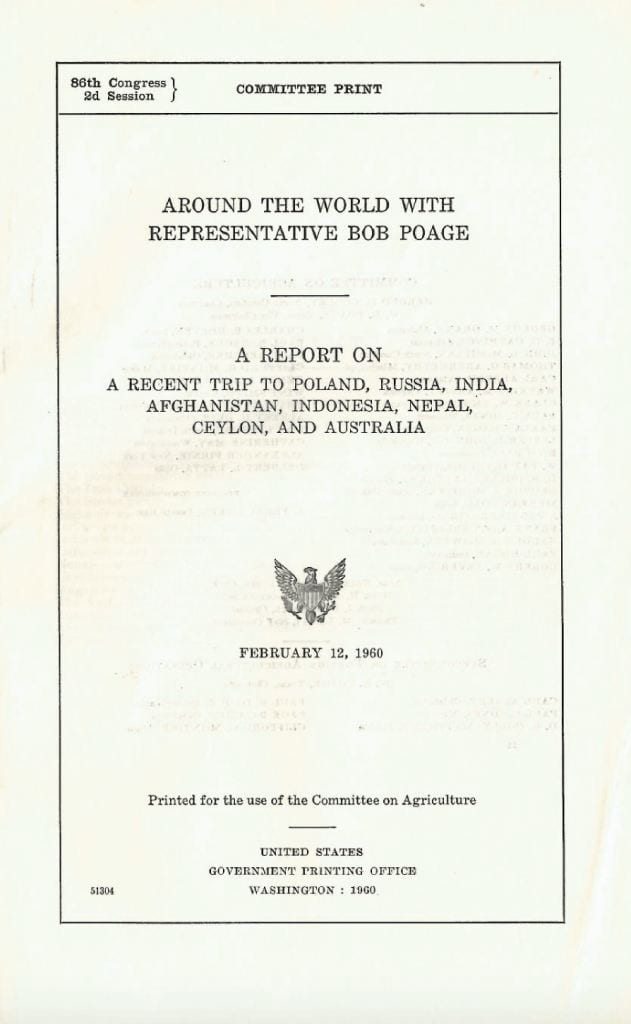
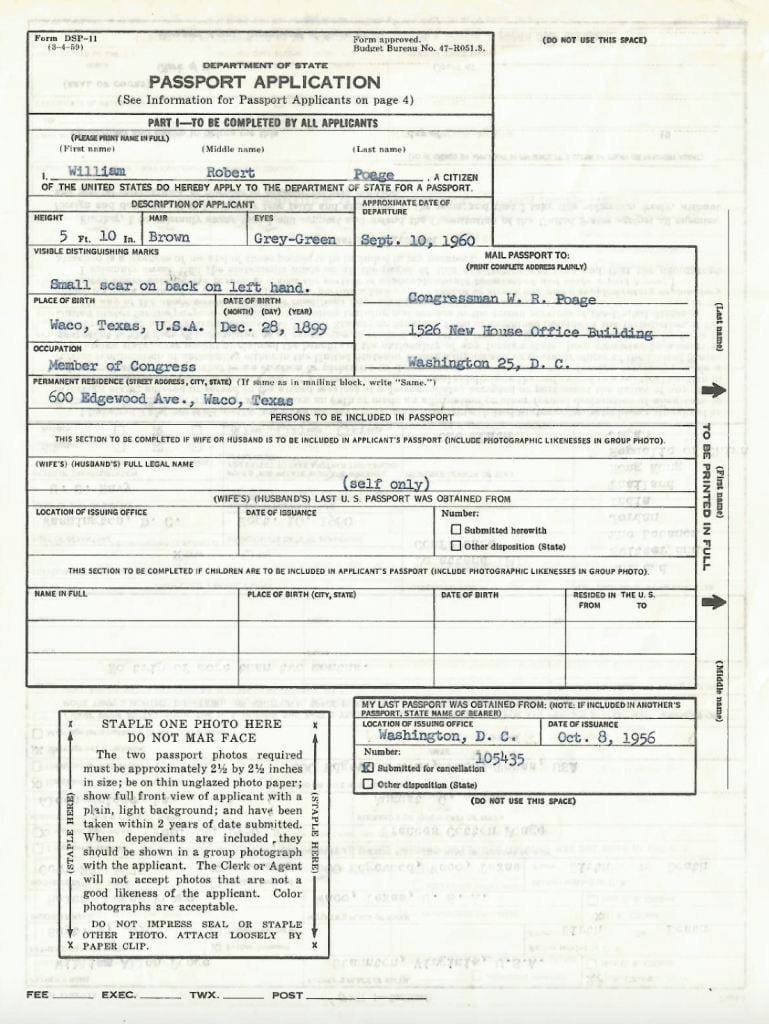
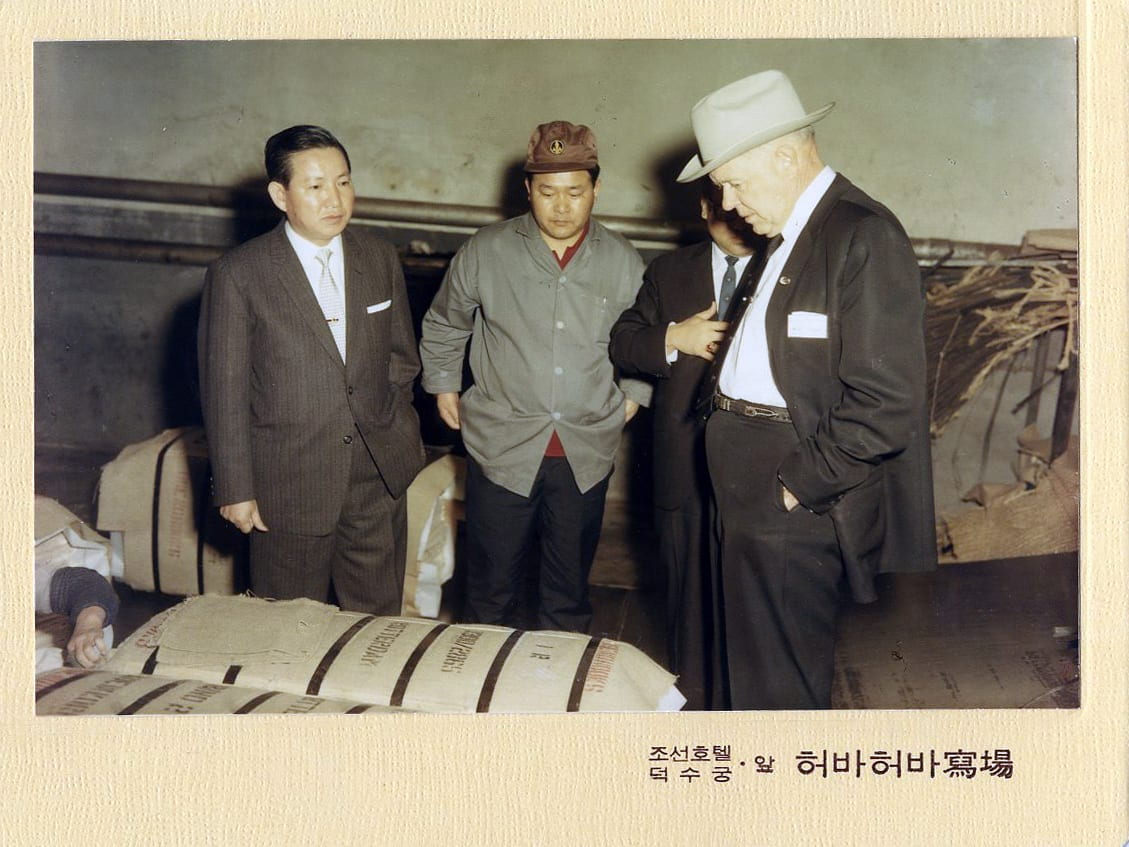
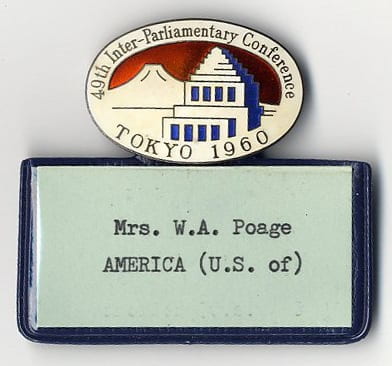
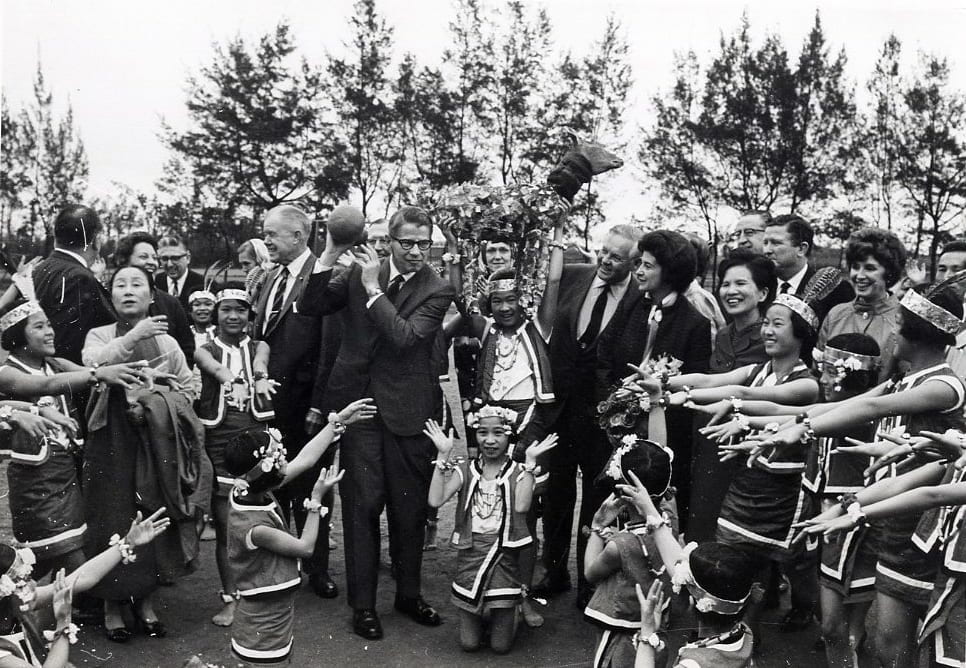
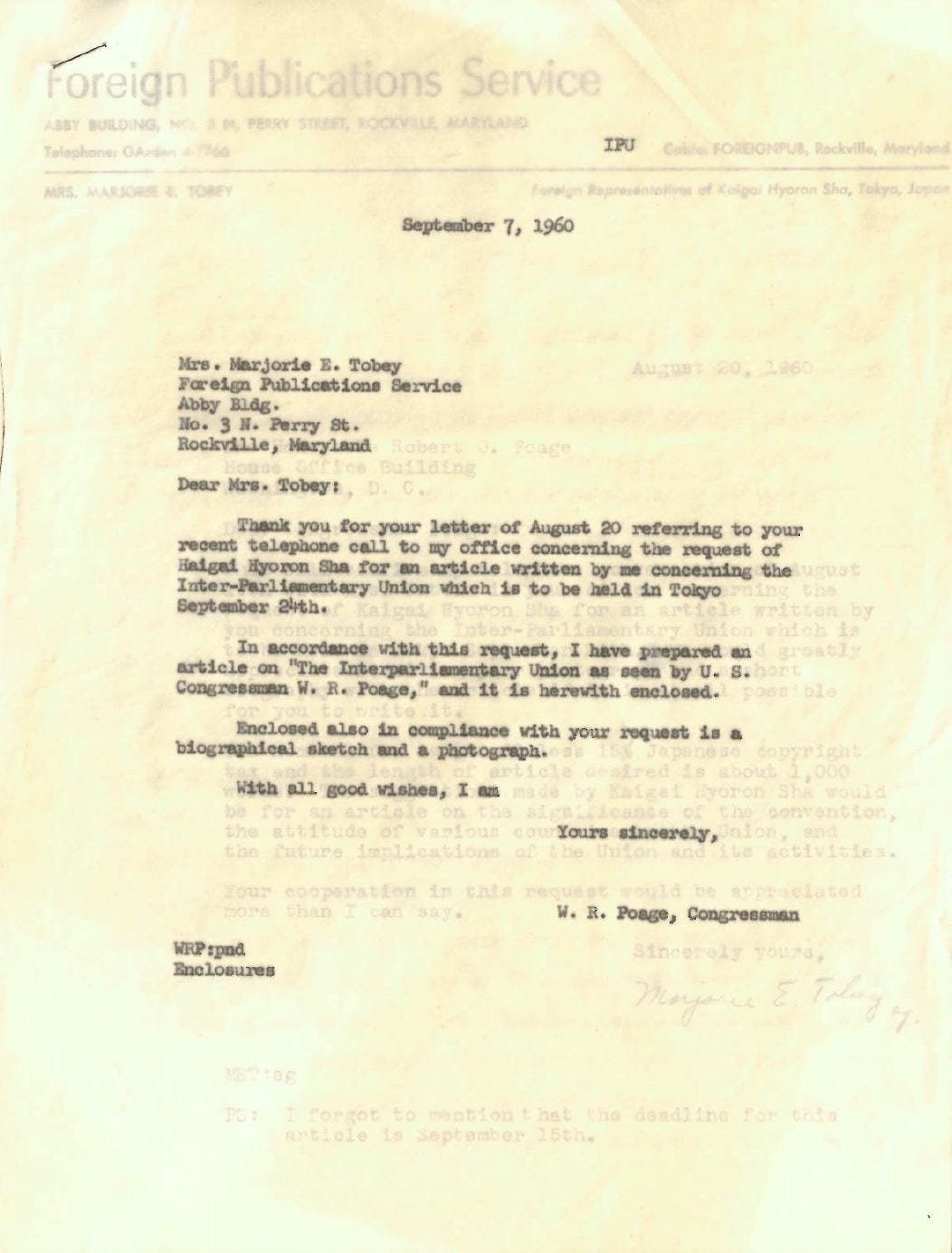
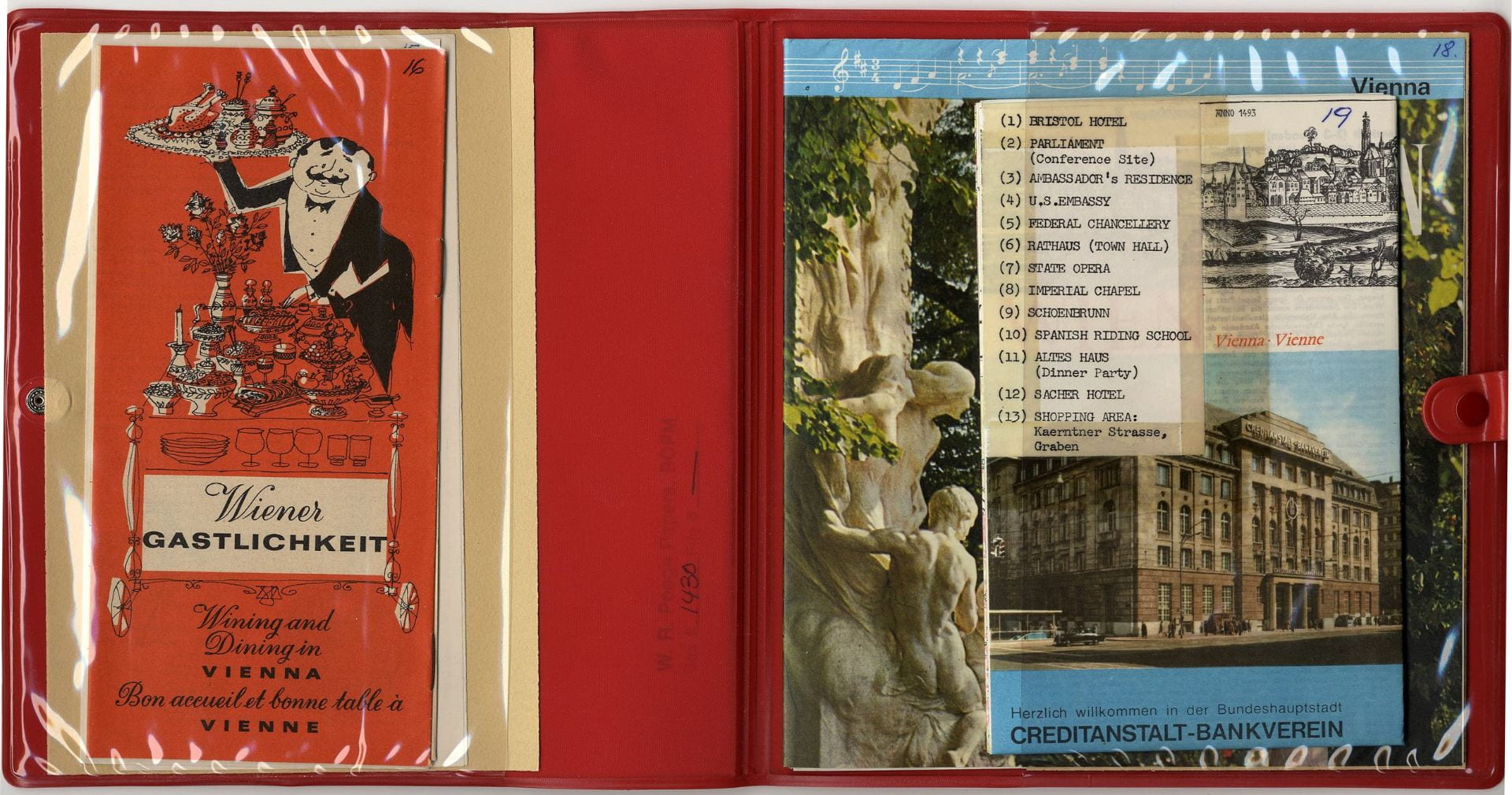
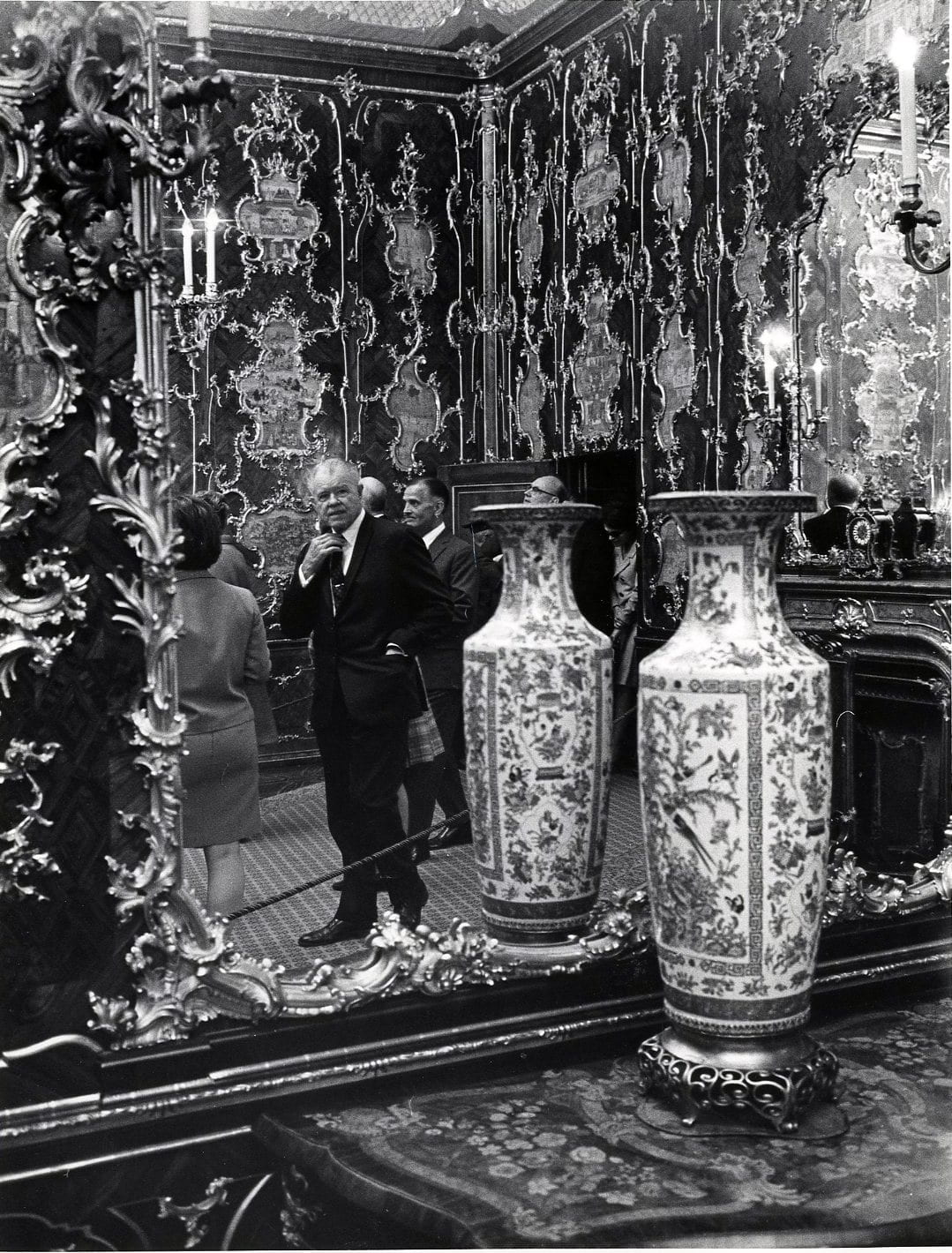
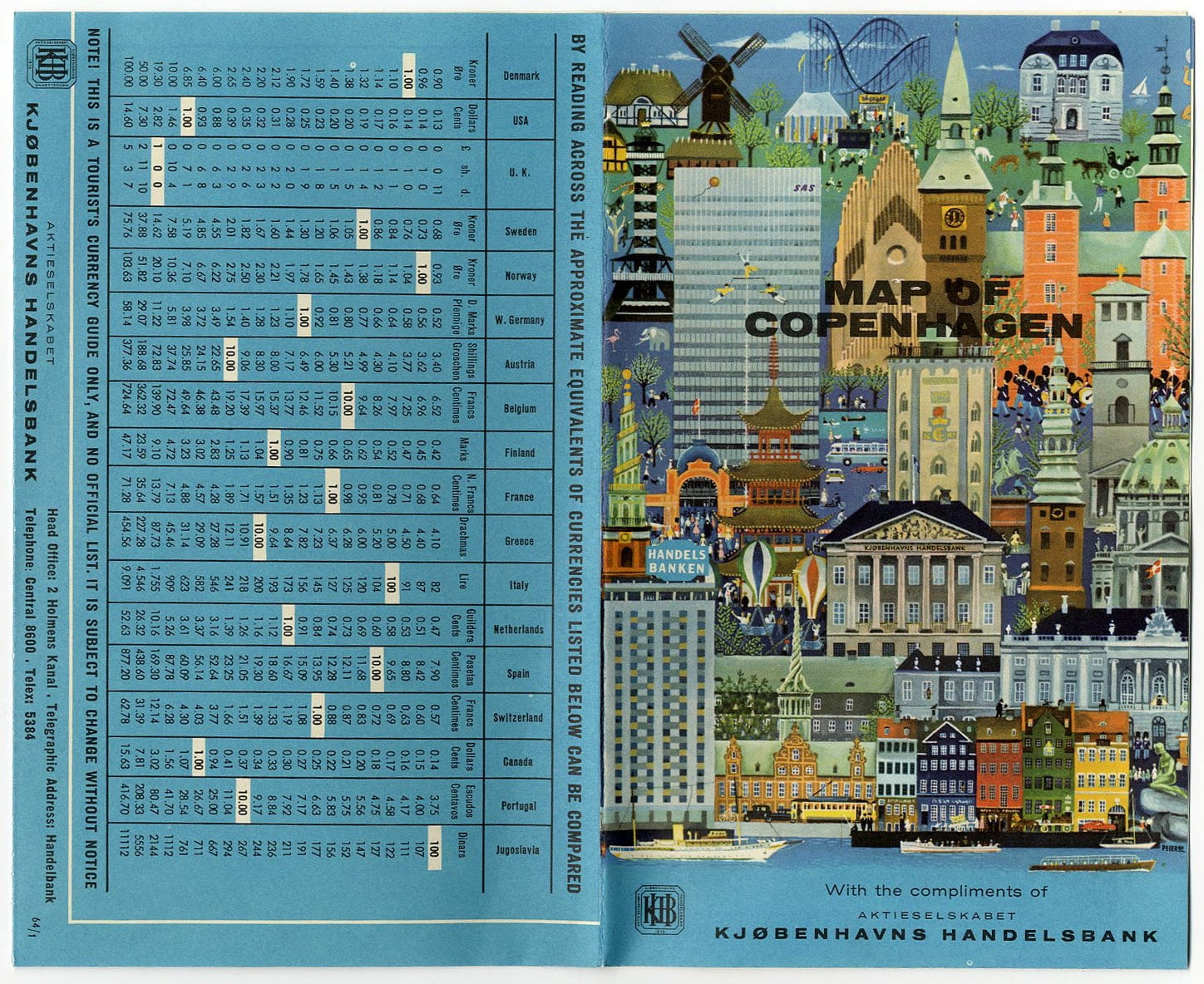

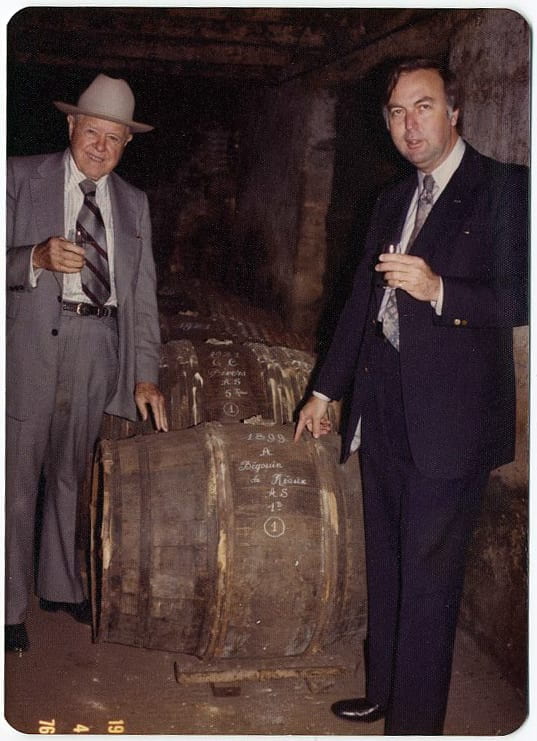
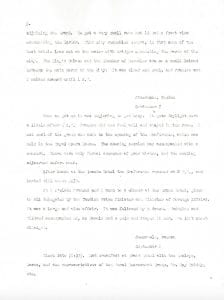



![Dairyfarming Annual 1956 [cover]](https://sites.baylor.edu/poagek12resources/files/2020/09/Dairyfarming-Annual-1956-cover.jpg)
![Sugar and Fiji [brochure cover]](https://sites.baylor.edu/poagek12resources/files/2020/09/Sugar-and-Fiji-brochure-cover.jpg)
![Colony of Fiji Travel Brochure [undated]](https://sites.baylor.edu/poagek12resources/files/2020/09/Colony-of-Fiji-Travel-Brochure-undated.jpg)
![Visitors Guide to Perth [cover]](https://sites.baylor.edu/poagek12resources/files/2020/09/Visitors-Guide-to-Perth-cover.jpg)
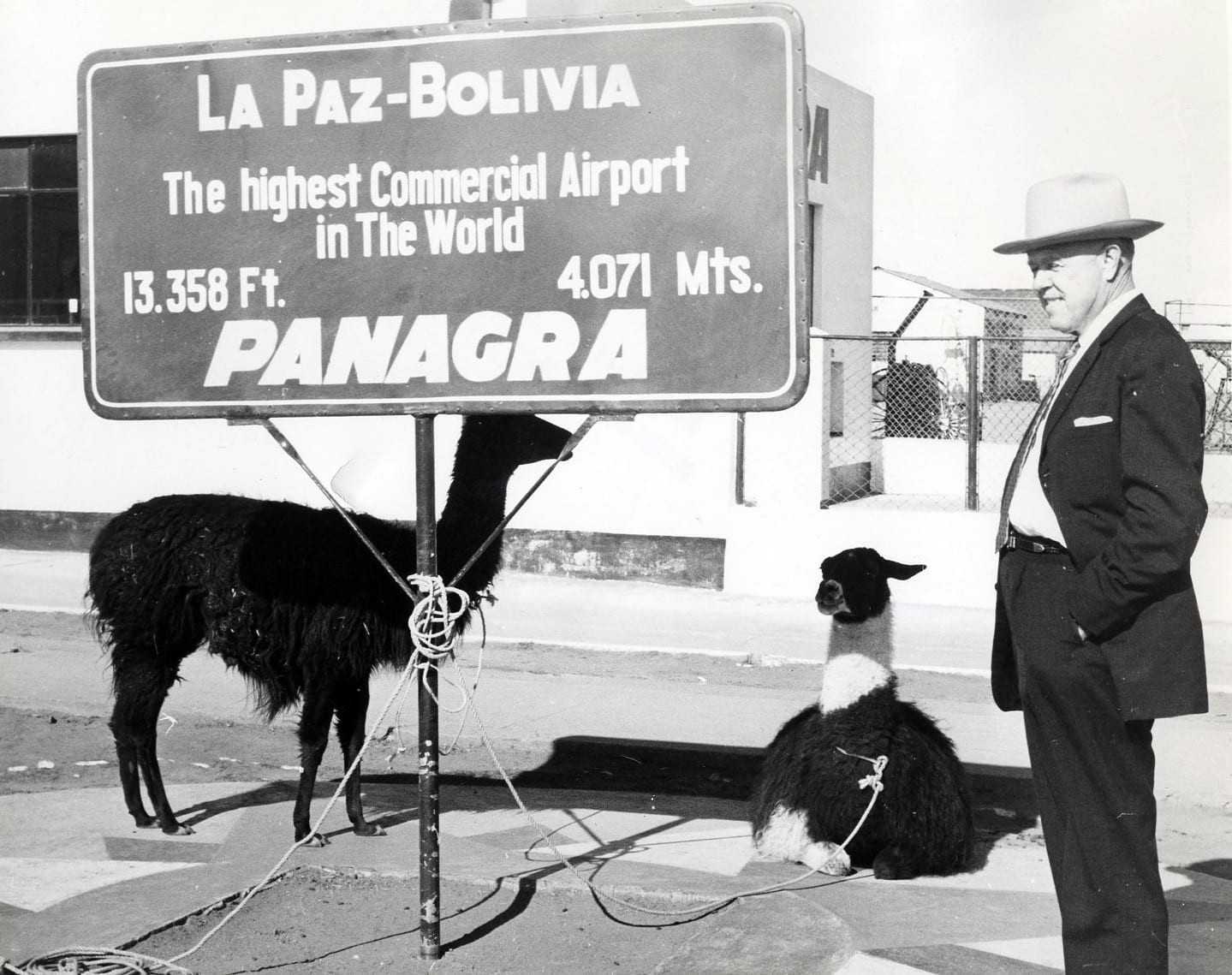

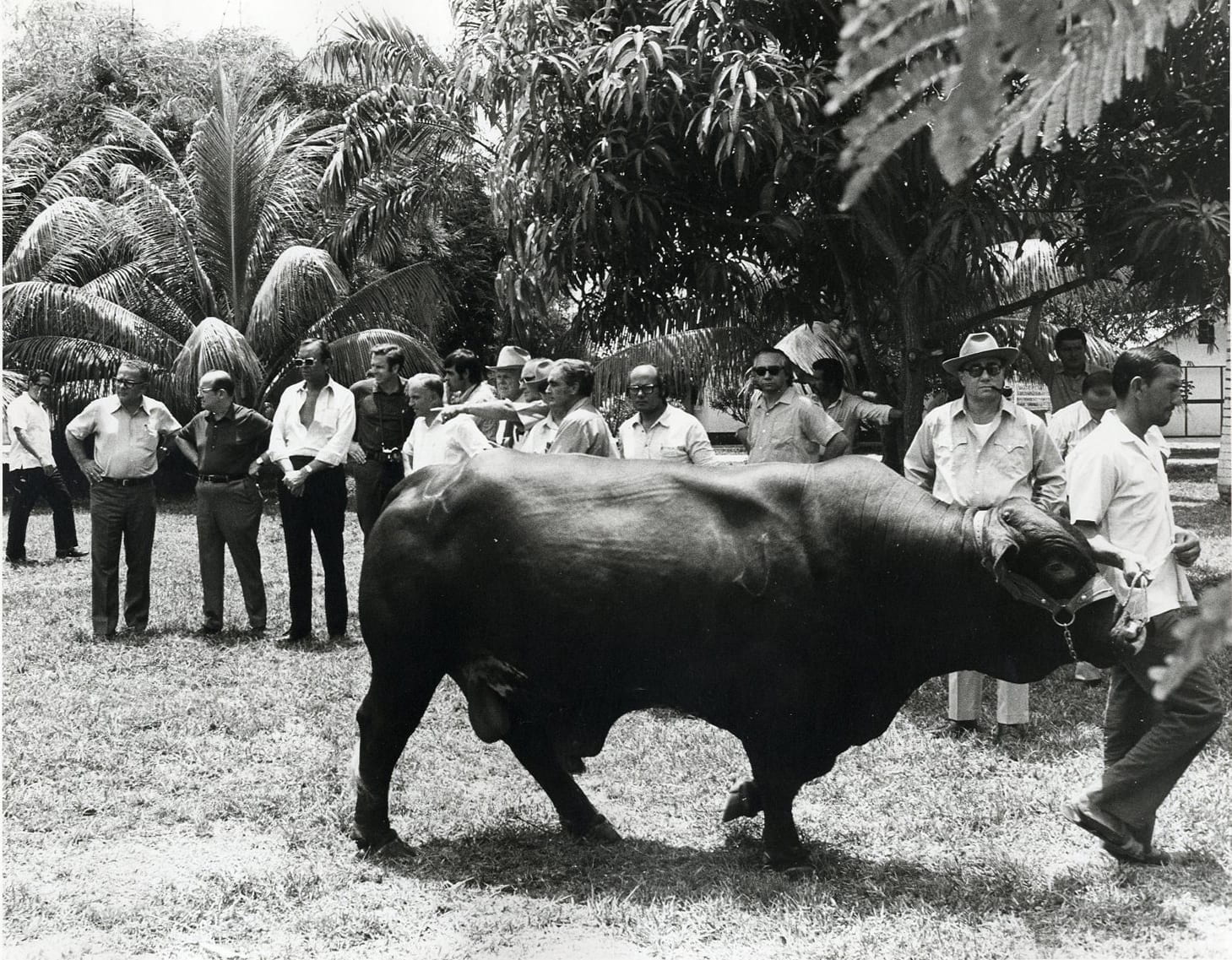
![Congressman Poage shakes hands with an unidentified man in Beirut [undated]](https://sites.baylor.edu/poagek12resources/files/2020/10/Congressman-Poage-shakes-hands-with-an-unidentified-man-in-Beirut-undated.jpg)

![Congressman Poage with a group of visitors at a site in Iran [undated]](https://sites.baylor.edu/poagek12resources/files/2020/10/Congressman-Poage-with-a-group-of-visitors-at-a-site-in-Iran-undated.jpg)

![Congressman Poage and a group of people in front of Persian ruins in Iran [undated]](https://sites.baylor.edu/poagek12resources/files/2020/10/Congressman-Poage-and-a-group-of-people-in-front-of-Persian-ruins-in-Iran-undated.jpg)
![Congressman Poage meets with dignitaries in Yemen. [Undated]](https://sites.baylor.edu/poagek12resources/files/2020/10/Congressman-Poage-meets-with-dignitaries-in-Yemen.-Undated.jpg)
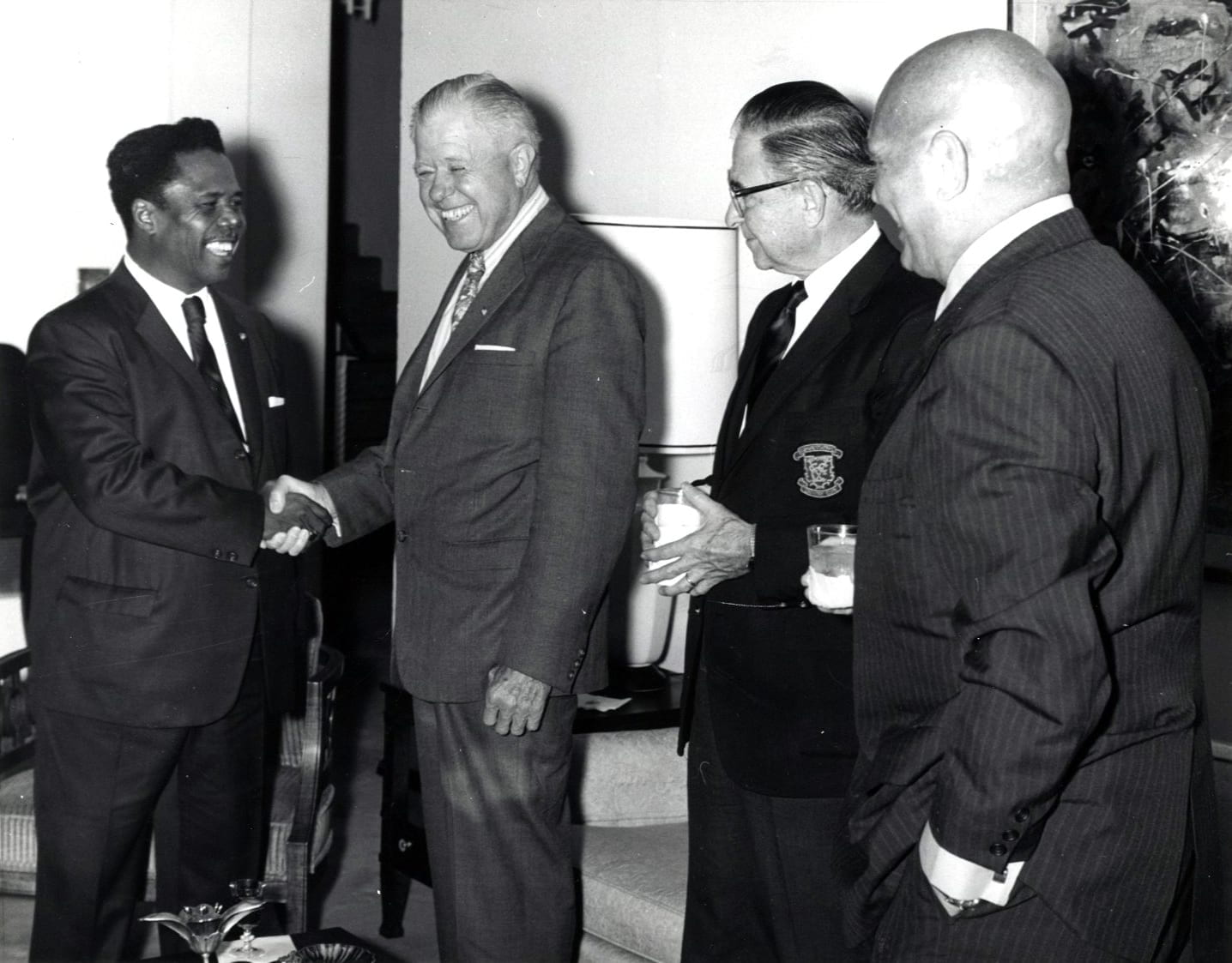
![French Equatorial Africa [brochure cover]](https://sites.baylor.edu/poagek12resources/files/2020/09/French-Equatorial-Africa-brochure-cover.jpg)
![Congressman Poage is part of a group visitng the Sphinx [undated]](https://sites.baylor.edu/poagek12resources/files/2020/10/Congressman-Poage-is-part-of-a-group-visitng-the-Sphinx-undated.jpg)
